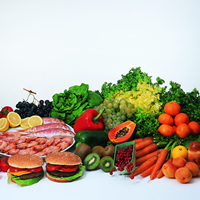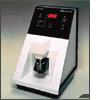Food Analysis

The most common analytical methods used in the food industry.
Product Selection

Nitrate & Other Parameters
Don't let the apparent simplicity of these tools fool you! Get great results - with the accuracy of instrumental analysis in moments...

Chloride Analysis
The measurement of salt (sodium chloride) concentration in the food and dairy industry is universal...

Colour Measurement
The food industry has a long history of measuring the colour of their products....

Constant Climate Chambers
Test chambers for constant climatic conditions provide consistent temperature and humidity values for long-term testing of shelf lives, packaging etc...

Density
Density of solutions, liquids etc is a basic test for quality control in the food and beverage industry...

Viscosity
Modern food means more and more convenience foods...

Moisture Analysis
A choice of infrared heating or halogen moisture analysers for routine or high precision applications...

Melting Point
Melting point is a very useful and important value to determine the quality and purity of food ingredients and vegetable/animal oils and fats...

Electrochemistry
pH is the major technique used in the analysis of foodstuffs....

Karl Fischer Titration
Choice of compact volumetric or coulometric Karl Fisher titrators and related reagents for water determination

Kjeldahl Analysis
Kjeldahl nitrogen determinations are performed on a variety of food substances...

Protein, Enzyme and Fibre Kits
From the checking of rancidity in cooking oils to the content of fats in food with the soxhlet method VWR offer a solution...

Edible Oils & Fat Analysis
From the checking of rancidity in cooking oils to the content of fats in food with the soxhlet method VWR offer a solution...

Refractometry & Polarimetry
Refractometry is one of the basic methods for quantitative analysis and quality assurance methods in food and beverage industry...